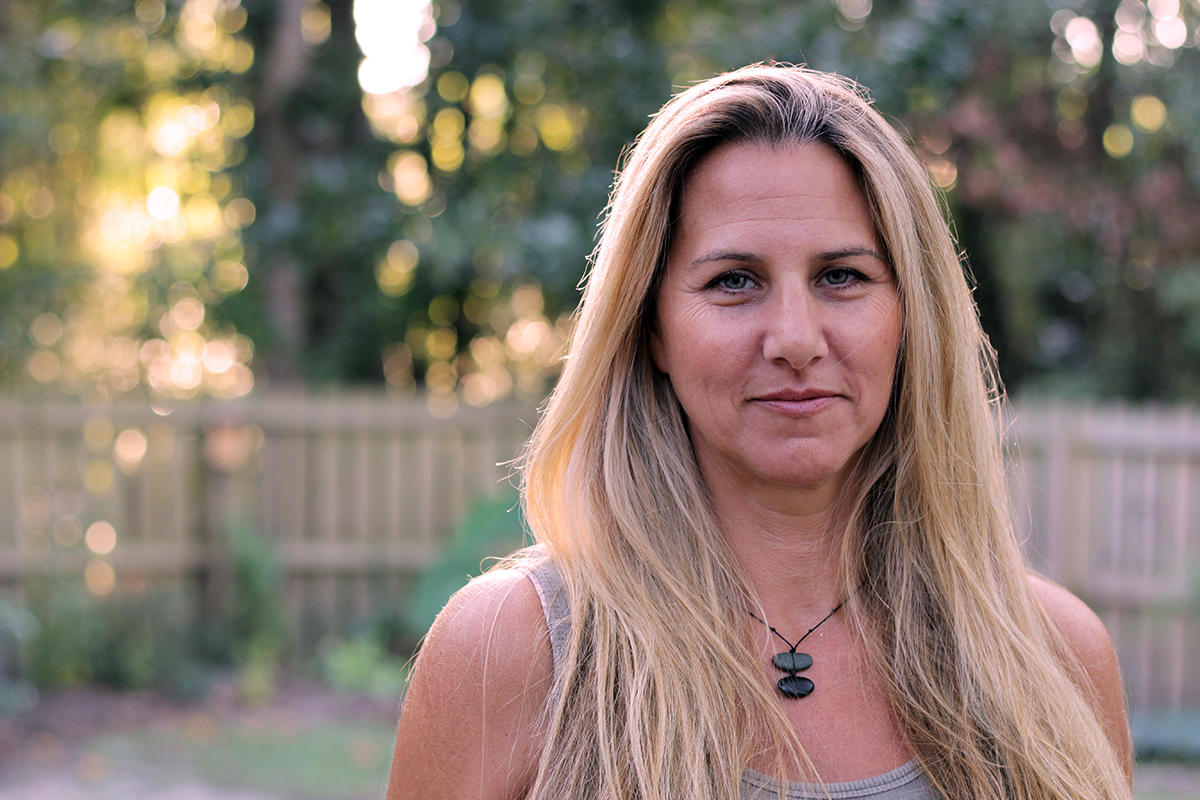The New York Times and New Yorker investigation into Harvey Weinstein’s sexual misconduct unleashed the #MeToo movement, and women everywhere began sharing their frustration—and fury—about the ways they’d also been mistreated and abused. Yet, what this movement has also sparked is an unintended consequence: It’s re-triggering traumatic experiences from the past, bringing terrible memories and emotions to the surface again. What can you do if this has happened to you—or how can you best support a friend or loved one facing an old trauma all over again?
Real Woman investigates.
he moment 20-year-old Brittany Piper let the man into her car, she had a sinking feeling she was in trouble. She’d been out with friends earlier that night and got a flat tire as she was driving home. When the man offered to help her change the tire, she thought he was simply being nice. After he helped Piper put on the spare, he asked for a ride home—and when she started driving, he touched her leg and told her to stop the car.
Piper sped up. The man punched her in the face and said, “If you don’t stop the car, I’m going to kill you.” She stopped and begged him not to hurt her. He told her to put the seat back, and he climbed on top of her and raped her.
Unlike many victims of sexual assault, Piper was able to testify against her perpetrator at a trial and watch as he was sentenced to 60 years in prison. During that highly publicized case, Piper was praised for being poised and calm. “One reporter covering the case said that in 20 years of covering trials, he’d never seen a rape victim who was so strong,” says Piper, now 30. “But I was suffering in silence.”
In the last year and a half, two words—me too—have given women everywhere both permission and inspiration to step out of their silent suffering. In the first 24 hours after #MeToo went viral, the hashtag had been used by more than 4.7 million people in 12 million posts on Facebook, and a whopping 45 percent of users in the United States had a friend who had posted something using the term. For many victims of sexual assault, this was a rallying cry—a chance to finally be heard. At the same time, it had a consequence. Reading and posting #MeToo stories triggered memories about painful events.
“It can be a trigger when you see one story in the media,” says Piper. “Seeing so many of them was overwhelming.” What’s more, these women who were posting their #MeToo stories were being praised for their courage, which reminded Piper of the compliment she’d also received 10 years prior—how strong she was—and how that actually did her a disservice. “There’s a perception that survivors have to be strong, but at the time I took that to mean I couldn’t show when I was struggling,” she says. “I think the #MeToo movement amplified this for me and other victims.”

Putting on a brave face was another way to move around my pain rather than through it. But what I’ve learned is that it is possible to dive into your pain in order to transmute it.
Brittany Piper is a sexual assault survivor.

If you’re a woman, a minority, or both, you will have countless experiences where your boundaries have been violated or disregarded. For example, I am a woman who has never been raped, yet I can completely relate to living in a world where I’m objectified and treated as less than. For someone who’s had any kind of violation, there’s a likelihood that it will re-surface.
Alyson Lanier is a guide, coach, mentor, counselor, teacher, mother, and wife.
Trauma, Re-Triggered
While a spotlight on the topic of sexual assault and misconduct has been widely praised as needed and welcome, many experts, victims, and even women with no past of sexual assault have also acknowledged that it’s been a trigger, digging up painful memories and unresolved feelings.
Relationship and intimacy coach Alyson Lanier, who has practiced as a psychotherapist for more than 20 years, says understanding why this requires an understanding of what trauma entails. “Trauma happens when we feel our safety is threatened in some way, and we don’t know what to do, or we don’t have the ability to keep ourselves safe,” she says. “The result is that the nervous system gets completely overwhelmed, and we cope by leaving our bodies.” It’s a genius survival strategy when you think about it: Dissociating from your body, particularly when something you can’t control is happening to it, is a way to take flight if you can’t fight.
The catch is that the nervous system holds on to the memory of that trauma, and from that point on, it isn’t able to discern whether or not there is a real threat, says Lanier. “All the nervous system does is identify triggers,” she says. “Even though your executive, higher-thinking brain is like, ‘Wait, this is different, I’m safe,’ your reptilian brain—which controls your nervous system—is sending your emotions on a tailspin.”
Making things even trickier is that it’s not just #MeToo stories that can be triggering, adds Emily Horowitz, MA, LPC, a psychotherapist in Boulder, Colo., who has extensive experience working with trauma victims. “A heightened response to a situation—one that feels like an overly large reaction given the circumstances—can be a sign that a situation is re-triggering something from the past,” she says. “It can be disorienting and surprising when this happens seemingly out of nowhere.”
Just as confusing for many women are the feelings that can surface even when there’s no history of sexual trauma or abuse. Lanier says her clients in this camp told her they were confused why the hearings of Supreme court nominee Brett Kavanaugh and Christine Blasey Ford, who alleged that Kavanaugh attacked her when they were in high school, set them off so much. “If you’re a woman, a minority, or both, you will have countless experiences where your boundaries have been violated or disregarded,” says Lanier. “For example, I am a woman who has never been raped, yet I can completely relate to living in a world where I’m objectified and treated as less than. For someone who’s had any kind of violation, there’s a likelihood that it will re-surface.”
This is the fall-out of one of the most viral and powerful hashtags in the history of social media, says Ashley Horner, 48, who was sexually molested from the time she was 10 years old until she was 20. “We’re living in a time where there are so many triggers, which can put you right back into your painful past,” she says. “It’s no different than putting heroin in front of a recovering addict. This is something we collectively need to realize—and do a better job of respecting.”
Find—and Show—Support
What Horner endured amazes her wife, but the details also
horrify her. Though Horner says that hasn’t deterred her beloved from being a constant source of strength as she continues to heal from the years of sexual abuse. “How has my wife shown up for me? She has simply shown up. She’s listened. She hasn’t tried to be an expert or understand the ins and outs of sexual abuse or rape. She’s just been there for me—holding and comforting me,” says Horner.
That’s not to say it hasn’t been hard. “My wife has said to me, ‘It hurts my heart that you had to go through that as a child,’” says Horner. “And I’ve said to her that if it ever gets to be too much for her to hold—if some details are too much to hear—that I want her to name it.”
This is a crucial point, says Horowitz, because it’s OK if listening to a loved one share details of past trauma feels overwhelming. “As the listener, you have to really take care of yourself, because it’s hard to sit with someone’s pain,” she says. “It can feel traumatizing to you as the listener, even if you haven’t experienced the same kind of trauma.” Details about traumatic events can be triggering because you might imagine yourself in that situation, says Horowitz. “It’s like watching a scary movie—all of your senses are engaged to the point where you have a physical reaction. Learning something horrifying can also shatter your sense of the world, which can be daunting.”
If you aren’t able to show the kind of support your friend or loved one needs, know that you can take care of yourself and be compassionate. “Sometimes all someone needs is to have a witness—to hear you say, ‘I’m here for you; I’m holding this with you.’ And if you can’t hold that pain, it’s OK to say, ‘I’m so sorry, I wish I could hold this for you and I can’t.’”
Notice your own physiology to tell if someone else’s story is sending you to a detrimental place, says Horowitz. “Is your heart rate increasing? Do you feel hot? Cold? Do you have a feeling like you’re floating—almost as if you’re not in the room? Your somatic response can tell you a lot,” she says.
The same is true if you’re a victim of sexual assault, looking to others for support. Noticing not only how you feel as you share your story, but also how the person you’re talking to is staying present or not, can give you clues as to whether or not sharing your story will be helpful. “Is the person you’re opening up to able to stay grounded and calm as best she can, even if you are spinning?” says Lanier. “Is she able to stay present in her body and connected to you, even when the overwhelm is taking you away?” If this is the case, it can help victims stay present with their own emotions, rather than dissociate.
To help her clients with a history of trauma do this, Lanier takes them through a process of seeing what happens when they go back into their bodies. “We watch for feelings that are so intense, they take you away from your body. Then, we learn how to be with those feelings that are there.” The goal is to get to a point where you can be with intense feelings when they come up, rather than run from them or stuff them down.
Piper says she learned the importance of this work after spending years not feeling her pain. “After my assault, I dealt with triggers in unhealthy ways,” she says. “I became an alcoholic and developed an eating disorder. Putting on a brave face was another way to move around my pain rather than through it. But what I’ve learned is that it is possible to dive into your pain in order to transmute it.”
Both Piper and Horner say they are doing this in part by helping other victims of sexual assault. Horner founded an organization called Anchored Souls, to help provide support for those dealing with trauma. Piper speaks at universities and women’s organizations around the world about how to heal from sexual assault. “Sharing my story and talking to other victims helps me look at what happened to me with empathy, rather than judgment,” she says. “Now, I can take a step back and say, ‘You went through something really awful, but it wasn’t all for nothing.’ It makes my pain feel more purposeful and beautiful. It’s a way I can honor all that I’ve gone through.”
How to Find a Therapist You Will Love
The hunt for a mental health professional who feels like the right match can be so daunting, it’s easy to put it off. After all, this person will ask you about some of the most intimate, challenging times of your life, and prompt you to sit in the pain that will undoubtedly surface in order to help you move through it. Considering this—and the fact that there are many therapeutic styles and no one-size-fits-all approach—here are some important considerations to keep in mind as you try to find, and then start working with, a therapist:
Talk to friends.
If you’re willing to be transparent about your desire to work with a therapist, mentioning it to friends who might have some recommendations can be a great place to start, says Lanier. If it’s a close friend who knows you well, she might be able to recommend someone she’s worked with—and give you some insider info on the therapist’s style, and how it has worked (or not!) for her.
Request a phone consult.
Many practitioners will do this as part of their process, to get a sense of what kind of support you may need. This is a great chance to get an initial feel, says Horowitz. “Most people can figure out relatively quickly if they’re drawn to work with someone, and if it’ll be a relationship that feels nurturing and safe,” she says.
Inquire about a therapist’s experience and training.
If you’re seeking help for trauma, you want to know that your therapist has actually worked with trauma victims, says Lanier. “Any therapist can take a weekend workshop. You want someone who’s not only done the trainings, but who has also used those techniques with their clients.”
Ask if a therapist is doing her own therapeutic work.
All of us have experienced trauma to some degree, says Lanier, and therapists are no exception. “That’s why I encourage everyone to ask a therapist, ‘Have you done your own trauma work?’” she says. It can be helpful to know that the person you work with is walking the talk.
Drop the stigma.
If seeing a therapist doesn’t feel natural, try to remember that seeking professional help when it comes to your mental health is no different than going to a doctor for your physical health, says Horowitz. When you have the flu or an ear infection, you see your doc. Tweak your neck? You probably don’t think twice about going to a chiropractor.





